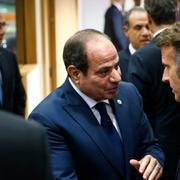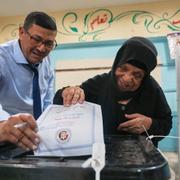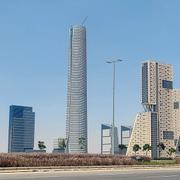bakgrund
Protesterna i Egypten 2012–2013
Wikipedia (en)
The 2012–13 Egyptian protests were part of a large scale popular uprising in Egypt against then-President Mohamed Morsi. On 22 November 2012, millions of protesters began protesting against Morsi, after his government announced a temporary constitutional declaration that in effect granted the president unlimited powers. Morsi deemed the decree necessary to protect the elected constituent assembly from a planned dissolution by judges appointed during the Mubarak era.
The demonstrations were organized by Egyptian opposition organizations and individuals, mainly liberals, leftists, secularists and Christians. The demonstrations resulted in violent clashes between Morsi-supporters and the anti-Morsi protesters, with dozens of deaths and hundreds of injuries. Demonstrators gathered outside the presidential palace, which in turn was surrounded by tanks and armored vehicles of the Republican Guard. The anti-Morsi protesters in Cairo were estimated at 200,000, while over 100,000 supporters of Morsi gathered in Cairo to show support. A number of Morsi's advisers resigned in protest, and many judges spoke out against his actions as well. Resignations were tendered by the director of state broadcasting, Rafik Habib (Christian vice president of the Muslim Brotherhood's Freedom and Justice Party), and Zaghloul el-Balshi (general secretary of the commission overseeing the planned constitutional referendum). Seven members of Morsi's 17-member advisory panel resigned in December 2012.
On 8 December 2012, Morsi annulled his temporary decree which had expanded his presidential authority and removed judicial review of his decrees, an Islamist official said, but added that the results of the temporary declaration would still stand.
On 22 December, the Constitution supported by Morsi was approved in a national referendum by 64% of the voters, with 32.9% of the electorate voting. The opposition claimed fraud in the process and called for an inquiry.
Prior to the anti-government protests in Egypt, Morsi supporters gathered in Rabaa el-Adaweya to celebrate the one-year anniversary of Morsi's inauguration.
However on 30 June 2013, the first anniversary of the election of Morsi, thousands of Morsi opponents massed in Tahrir Square and outside the main presidential palace in the Heliopolis suburb demanding Morsi's resignation. Demonstrations were also reported in 18 locations across Cairo and in other different locations across the country including Alexandria, El-Mahalla and cities in the Suez Canal region. Various political organizations supported the demonstrations, including the Tamarod movement formed by members of the Egyptian Movement for Change, which claimed to have collected 22 million signatures calling for Morsi's resignation.
On 3 July 2013 the Egyptian Armed Forces released a statement announcing the end of Morsi's presidency, following a 48-hour deadline demanding that Morsi "responds to the demands of the people." In the same statement, the military announced the constitution was suspended for amendments and that new elections would be held at a future date. The chief justice of the constitutional court, Adly Mansour, became head of a transitional government.
In protest of Morsi's overthrow, his supporter, staged large demonstrations in the Nasr City district of Cairo, and in Alexandria, Luxor, Damanhour, and Suez.
In what the Muslim Brotherhood and its supporters deemed a "massacre," dozens were killed during clashes between Morsi supporters and Egyptian soldiers. In many cases, the Armed Forces denied shooting at demonstrators with live ammunition, contrary to claims by the Brotherhood, its supporters, and several Western media outlets.




